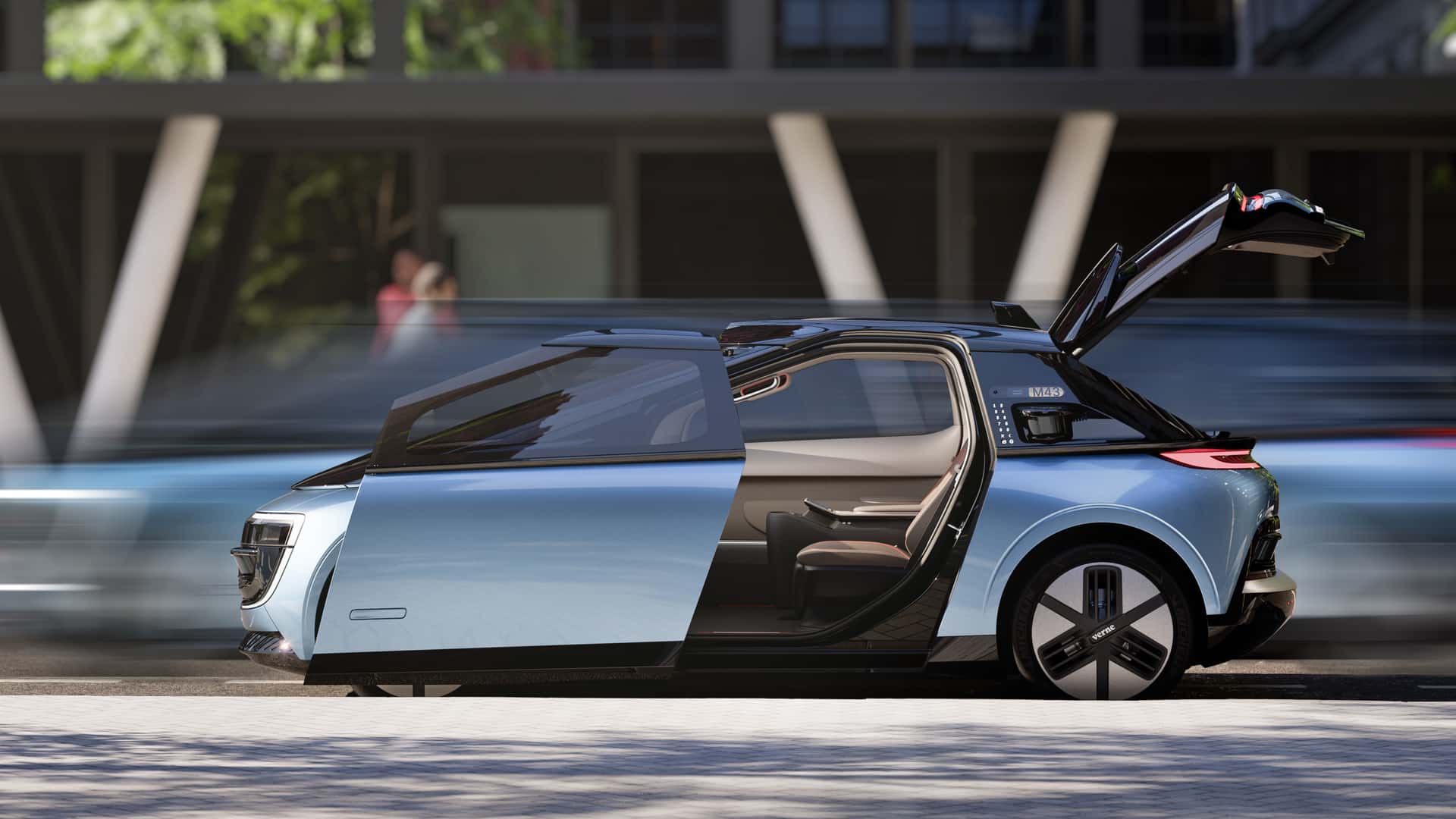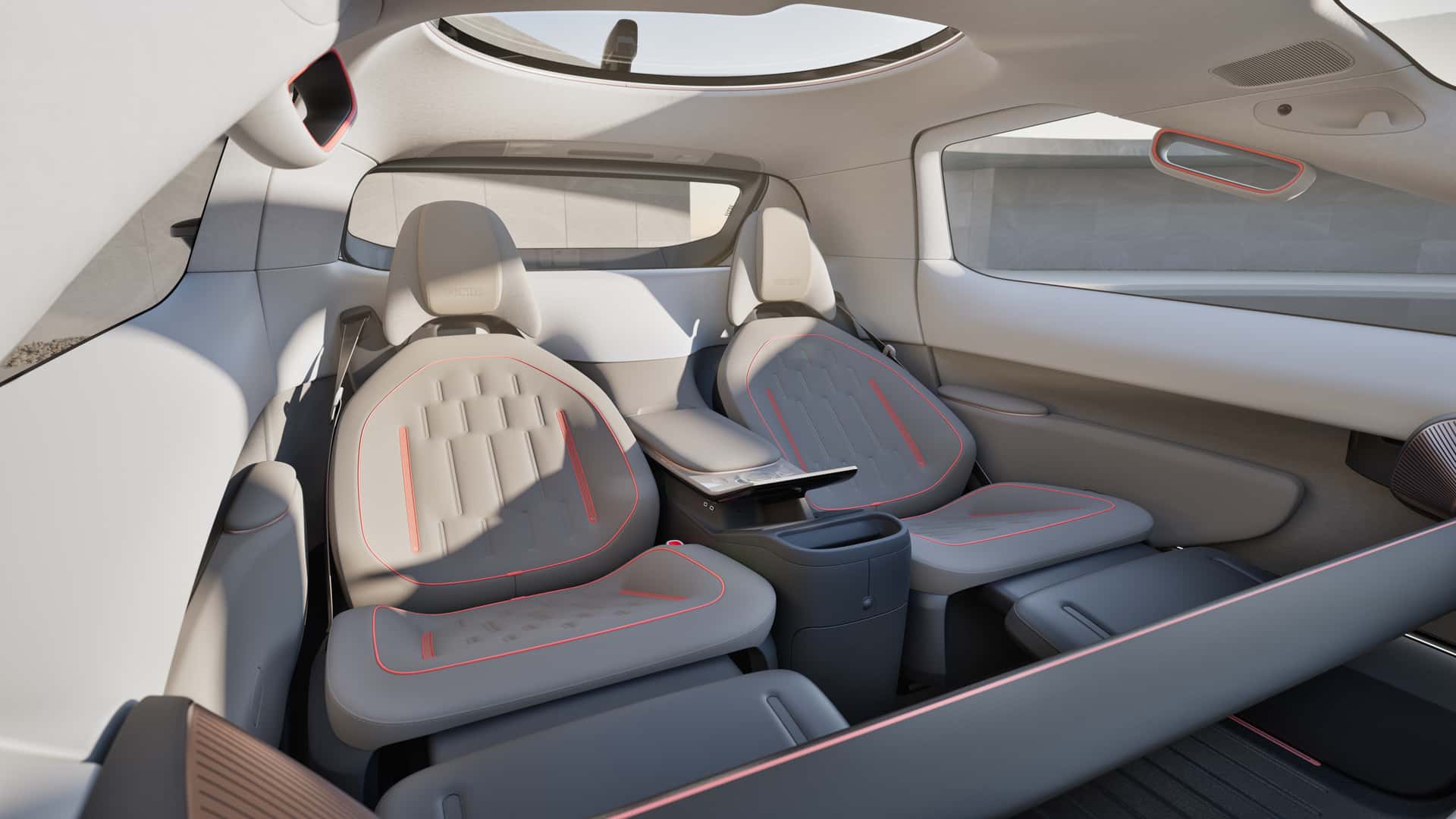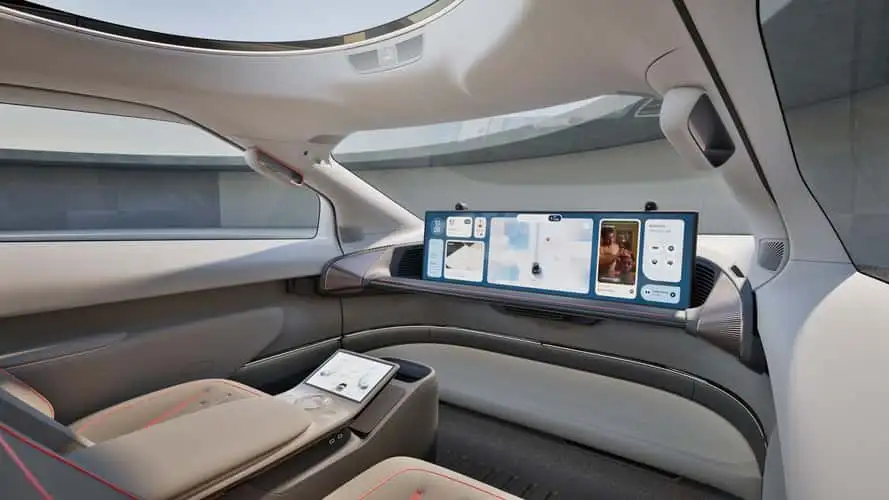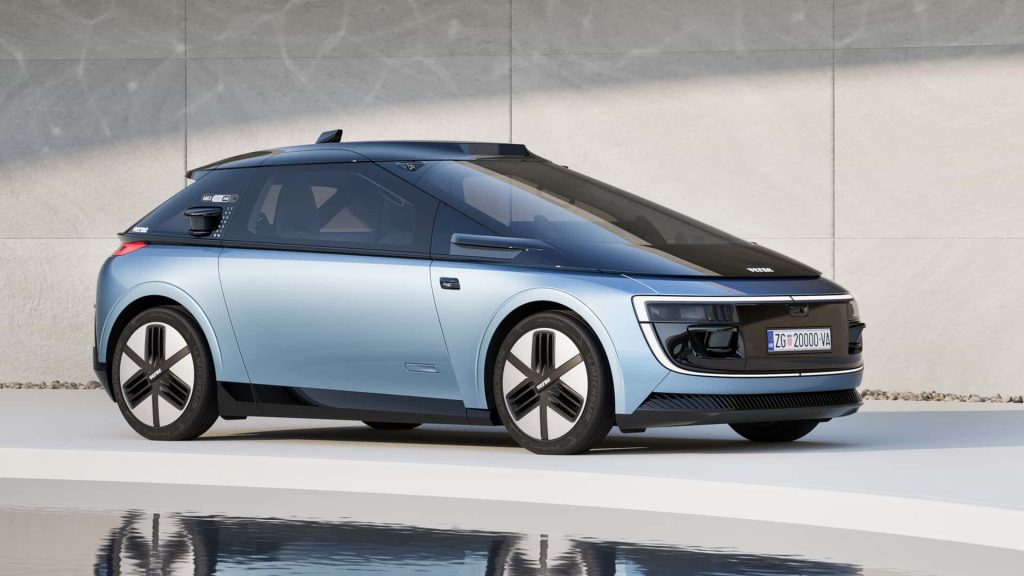The Verne robotaxi is a new player in the autonomous vehicle market, brought to you by Rimac, the electric hypercar company that recently merged with Bugatti. Here’s a breakdown of what makes Verne stand out:

Focus on Passenger Experience: Unlike many robotaxis that prioritize efficiency, Verne takes a passenger-centric approach.
- Designed from the inside out: The focus starts with a spacious cabin designed for a maximum of two passengers. This allows for ample legroom, even exceeding that of a Rolls-Royce according to Verne.
- Customization options: Riders can personalize their experience through a dedicated app. You can set temperature, lighting, sound system preferences, and even choose a specific scent before the car arrives. This aims to create a familiar and comfortable atmosphere for every ride.

Futuristic Cabin Ambiance:
- Goodbye steering wheel and pedals: Verne is a fully autonomous vehicle, so there’s no need for traditional driving controls. This frees up space and allows for a more lounge-like feel.
- Giant touchscreen: A massive 43-inch touchscreen takes center stage, potentially serving as an entertainment hub, work area, or window to the outside world during your journey.
- Mood lighting: Customizable ambient lighting allows riders to adjust the cabin atmosphere to their preference.


Technical Specifications:
- Self-driving tech: Verne utilizes Mobileye’s self-driving platform, a reputable name in autonomous vehicle technology. This ensures a high level of safety and navigation capabilities.
- Electric power: Following Rimac’s heritage, the Verne robotaxi is electric, contributing to a more sustainable future for transportation.
- Level 4 autonomy: Verne is expected to achieve Level 4 autonomy, meaning it can handle most driving situations without human intervention in designated areas.
Launch and Availability:
- Europe First: Verne’s initial launch is planned for Zagreb, Croatia, in 2026.
- Global Expansion: Following the European debut, Verne aims to expand its service to other European cities, the Middle East, and potentially other regions in the future.


